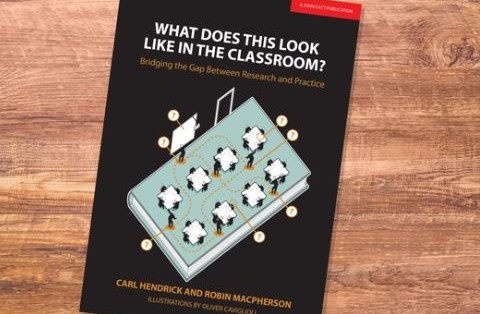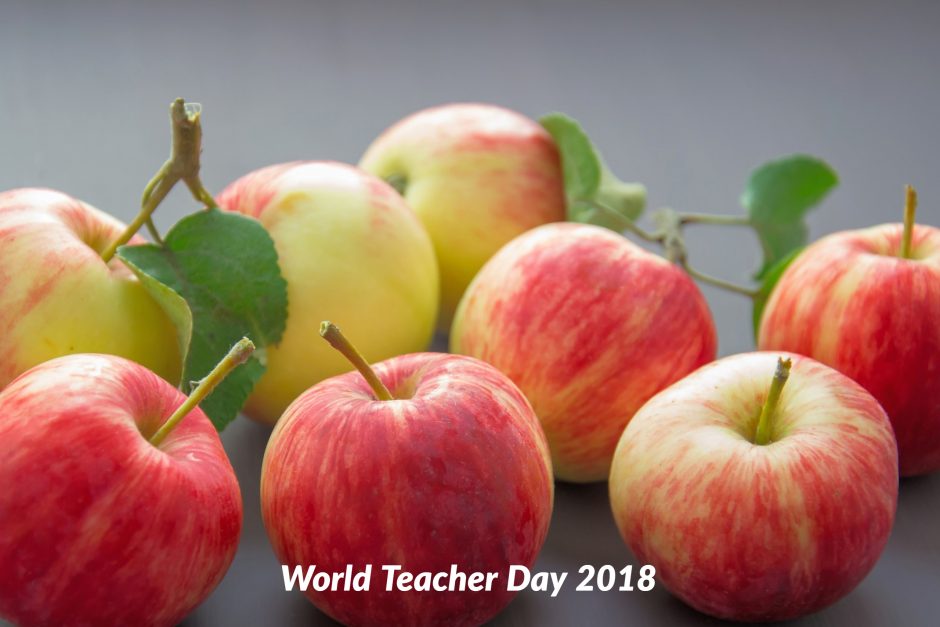Not mine.
Learning – What is it, and how might we catalyse it? is the latest offer from Peps Mccrea – author of Memorable Teaching (and Lean Lesson Planning) a book we gifted our teachers last Christmas.
I doubt you’ll find an education book with more useful insights per minute of reading time.
Dylan Wiliam
Now with Institute for Teaching he has released Learning – What is it, and how might we catalyse it? Version 1.1 with the forethought that classroom practitioners will “flesh out the implications of these [9] insights.”
Insight 1 Learning is a persistent change in knowledge
Learning is an unwieldy term, because it attempts to describe both a process and a product (Alexander et al., 2009). We refer to learning as something we do, as well as something we end up with. We can immediately sharpen the precision of any discussion about learning by teasing apart these two aspects, referring to the process of learning as thinking and the product of learning as knowledge.
What we can attend to and make sense of is limited by what we know. The more we know, the better we can think, and the better we think, the more we can know. This chicken-egg relationship is known as the Matthew Effect, and is the fuel that powers the engine of education.
Rigney (2010) in Mccrea
I have been more interested in how we direct students attention or what students attend to, following a Bjork and Bjork podcast I listened to. Then, to get students to think (hard and deeply) about that information. To record, then recall, and strength that information before using that new knowledge. Lets see where Peps goes next.
Insight 2 Some things are easier to learn than others
It is important to remember that our capacity to learn from cultural information is limited by our instinctive information processing abilities.
Little to contest here. I wonder if this is where we discussion “desirable difficulty?”
Insight 3 What we attend to is what we learn
It would appear Pep has an interest in directing attention too.
A large part of our job as teachers is to harness and direct attention.
As well as reducing distractions. Interestingly he employs the phrase “attentional sensitivity” to imply that our students attention is not guaranteed. This focus, he suggests, is most easily achieved by posing questions. This may be the case, however, there are supporting mechanisms to consider before the lesson begins, some within the scope of the class teacher (class layout, seating plan, lesson flow) and some beyond (period of the day, dynamics composition, culture of the school).
Few would argue that questioning is a key skill for all teachers to refine.
Insight 4 We can only attend to a few things at once
Thinking works best when we attend to no more than two or three interacting pieces of information at once.
Sweller et al., (2011)
Also, Pep encourages to consider the mode of communication and how we organise information, closely followed by a signpost to consider depth of prior knowledge or “expertise” of the students.
The optimal mode and amount of information to present depends on the prior knowledge of the pupils we are working with.
Very current “bridging the gap” research into practice. I would add that retrieval of prior knowledge may well be the best place to start, before introducing new thinking.
Pep offers a handful of suggested strategies to free up capacity, with the warning that these are temporary fixes. I wonder if the stabilisers on a bike is a useful metaphor?
I am not sure that this is the section for self-regulation or whether is deserves it’s own Insight section?
Insight 5 What we know determines what we can learn
So retrieval and prior knowledge gets their own “Insight.” I am starting to see these insights as a fluid network of connections and as we progress through Peps work, the more frequent they are becoming. Again, underpinning knowledge, underpins thinking. It makes me reflect on Yoshua Bengio (Canadian computer scientist, most noted for his work on artificial neural networks and deep learning) interview and “product thought.” Once you have the knowledge or information, after you have filled your mind with a problem…
… is when you can really start seeing through things and getting things to stand together and solving…now you can extend science, now when things are solid in your mind you can move forward.
Yoshua Bengio
The more knowledge we possess, the ease with which we can access it, the more we can think about. Lastly, the Insight touches on the achievement-motivation debate.
Over time, these ideas can influence our perception of who we are as learners. Our academic identities influence our achievements, whilst at the same time being a product of our achievements (Marsh & Craven, 2006).
Favouring achievement?
Emphasise the power of study, practice and feedback as dependable ways to learn. Communicate your belief in their potential and hold high expectations. Provide early and frequent success (particularly for novices).
There is a signpost to feedback, when used to help build a more accurate understanding of what students know and don’t know.
Insight 6 We attend to things we value
I found the opening three paragraphs interesting. I felt that is was an interesting Insight title under which to explore relationships and community.
Build trust and respect with your pupils. Establish areas of common identity and interest. Show them that you care about what they know, what they value, and what they are learning.
I will need to come back to this Insight.
Insight 7 We learn by gradually elaborating on what we know
Knowledge develops gradually, by elaborating what already exists in our minds.
As for being biased toward information that fits most closely with our existing views (Brown et al., 2014), would it ironic to readily support that stance?
I appreciate the fragility of requiring students to take a knowledge leap of faith. I understand why analogy is a useful conceptual bridge, however I am unsure of the requirement to gradually withdraw an analogy – if the student understands what an analogy is, and its purpose in extending knowledge?
Insight 8 Understanding arises through connection
Forging and by consolidating those connections. On forging connections – here is the “curse of knowledge” hinders teaching. Whilst Peps encourage teachers “not to leave out any parts or steps, even though they may seem obvious,” I would go as far as “chart all of the steps, then between each step, add a sub step or clarifying step.”
As our knowledge becomes deeper and more comprehensive, our capacity for critical thinking, problem solving and creativity within that domain unfolds.
Mccrea (2019: 17) summarising Willingham, (2007)
Deeper is a common descriptor when talking about understanding. I am not yet sure what it means. Broader, would mean more connections, deeper?
There is also careful distinction here, as there is throughout the Insights, not to conflate the developmental learning processes of novices and experts.
Within this Insight – feedback gets a second outing and the need to systematically and repeatedly expose pupil understanding – and provide corrective, timely feedback. Importantly, there is a cautionary note to the improper use of feedback also.
Insight 9 Fluency arises through consolidation
To avoid decay, interference, Pep highlights the need to invest in consolidating those connections; retrieval, spacing, interleaving and low stakes testing.
Bjork also talks about a pre-teaching testing effect. Tests before teaching, seem to act as priming strategy, that aids knowledge consolidation later. The other important factor is the role of sleep on consolidation or retention.
Thank you Pep and The Institute for Teaching for sharing Learning – What is it, and how might we catalyse it?
Mccrea (2019: 17) summarising Willingham (2007). – see https://www.ambition.org.uk/research-and-insight/learning-what-is-it.


